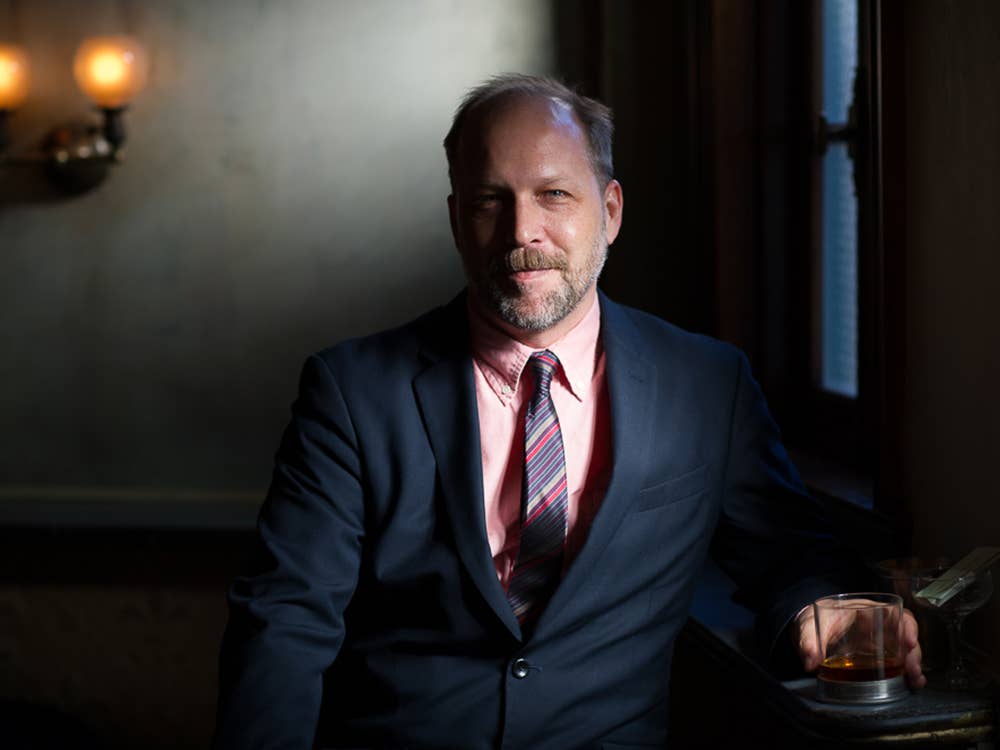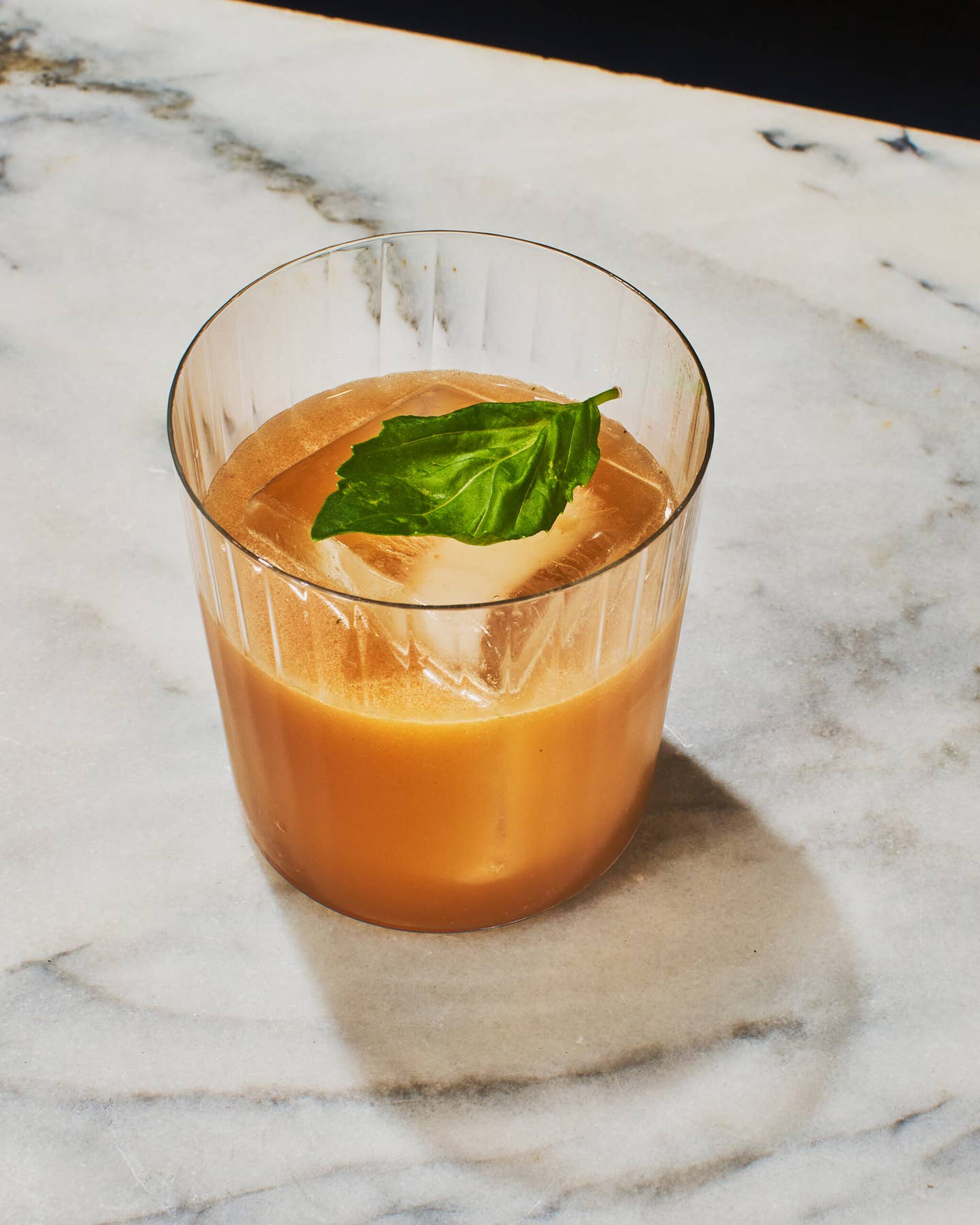
How Robert Simonson Cleared Up the Muddled History of the Cocktail Renaissance
For his latest book, A Proper Drink, the writer interviewed over 200 people in 12 cities to uncover the genuine origins of modern mixed drinks
When I first met Robert Simonson, I'd already been following his work for years. I was a budding cocktail writer and took the opportunity to interrogate him about his thoughts on the hottest new bars, the rise of Instagram-baiting cocktails, and handy hangover cures (his answer: "Don't drink too much").
But during our conversation, what struck me most—besides the healthy dose of dry wit—was the precision and depth of his knowledge about cocktail history, one I felt far exceeds what most journalists understand of their field. It's that same muddled history that he now chronicles in his latest book, A Proper Drink: The Untold Story of How a Band of Bartenders Saved the Civilized Drinking World. The story of the cocktail renaissance (which Simonson says stretches back 50 years, but really took off in the mid '80s) is so wrought with conflicting narratives that Simonson deemed it necessary to interview 200 bartenders and travel to 12 cities to find its true origins.
I chatted with Simonson to learn more about the history of craft cocktails and the challenges of telling their story.
Spirits historian David Wondrich digs into just how mixed drinks came to be called cocktails
Read More: How the Cocktail Got its Name
How did the writing process for this book begin?
It began with interviews, starting in January 2014, beginning, appropriately enough, with Dale DeGroff. I did nothing but interviews for about 15 months. I felt, if I was going to tell the story of the cocktail revival correctly, I had to talk to every important player, or at least try. It was all recent history after all. Everyone was still alive and kicking. I largely succeeded in talking to everyone I wanted to. There were only a couple people I couldn't manage to pin down for an interview. Strangely enough, they were not bartenders or bar owners, but journalists. Who knew drink writers had busier schedules than the people they cover?
What were the greatest challenges in reporting?
Finding the time to sit down with everybody, and then finding the time to transcribe hundreds of hours of interviews. At times, I had to ask certain people tough questions about their histories and relationships with other people in the industry. To their credit, almost everyone was very candid and honest about their experiences and remembrances.
How much traveling did you do for the book?
Quite a bit. Many important people involved in the cocktail revival live in New York, or visit fairly frequently. But many do not. So I had to go to them. In the United States, I traveled to Boston, Washington, DC, Portland, Oregon, Chicago, New Orleans, San Francisco and Los Angeles. I flew to London twice and Paris once. The biggest trip was to Australia, where I interviewed people in Sydney and Melbourne. If I could go back in time, I would have visited Germany as well. There were some important early cocktails in Munich and Berlin. But I did manage to interview a couple major German bartenders when they visited New York.
Since there's no written history of cocktails, how were you able to discern between the multiple "truths" you were no doubt given by the various historians and bartenders that you interviewed?
There were "Rashomon" moments from time to time, where people remembered recent history differently. That sort of thing will happen when researching any sort of history, and particularly in a history that took place mainly in bars, where memories of the night or the week or year before can get hazy. One of the more amusing instances concerns the invention of the Trinidad Sour, a modern classic cocktail. The stories put forth by bartender Giuseppe Gonzalez, who invented the drink, and Julie Reiner, who employed him at the time, come nowhere near each other. But this sort of thing happened less often than you might think. Where there were conflicting accounts, I relied on the additional recollections of outside sources, people who didn't have a stake in that particular slice of history. When you're drawing on five or six primary sources, it's a safe bet that you'll land somewhere close to the actual truth of what happened.
I assume you learned a lot from writing the book. But was there any one new thing that you learned that totally changed your perception of the industry?
Many of the leaders in the cocktail world recommended I go to Australia if I wanted to do the job right. Almost all the information I learned interviewing people over there—the early, trailblazing careers of Vernon Chalker and Matthew Bax; the rivalry between Melbourne and Sydney; the enormous role British expatriates played in instigating a cocktail moment in Australia—this was all news to me. It made me realize that the global cocktail rebirth was a three-continent affair, not just America and Europe.
What was your favorite piece of new information that you learned?
That Sasha Petraske enlisted in the Army for three years. I think very few people knew about that chapter in his life, or would have even suspected it. I wouldn't have found out if I hadn't have interviewed his best friend T.J. Siegal. When I asked Sasha about it, he seemed almost embarrassed, but also amused that I had found it out. He owned up to it. Sasha never dodged a single question I asked him.
The book centers on three cities: London, New York, and San Francisco. When did the cocktail movement begin in each one?
When the cocktail movement began in each city is debatable. But there seems to be a fairly clear consensus among the people I interviewed—and I generally agree—that it began in force in London with the opening of the Atlantic Bar and Grill in 1994. In New York, it started with Dale DeGroff at the Rainbow Room in 1987, but didn't shift into second gear until Sasha Petraske opened Milk & Honey 13 years later. In San Francisco, I'd say it began with Absinthe in 1998, but fully bloomed after the opening of Bourbon & Branch in 2005.
Why do you think bartenders are so preoccupied with this history?
The new generation of bartenders have always been history nuts. It's in their blood. They had to comb through old books and newspapers to rediscover their craft and the old cocktails they wanted to bring back. It only make sense that they should be interested in their own history as well. Since this revival began, bartenders have been well aware that they are part of a historical movement, and conscious of their place in it.
The book does a good job of explaining how cocktail culture has evolved within the industry itself. But how much do you think this knowledge has trickled down into the general drinking public, and who do you think is most responsible for that?
The extent to which the craftsmanship of cocktail bartenders has translated into better practices at home I think comes down to the basics. I don't think many people are doing infusions or fat-washing at home, except for the rabid enthusiasms. Rather, I think the everyday cocktail lover is just being more careful, using better ingredients, squeezing fresh juice, using jiggers and things like that. I think much of this change can be credited to the plethora of new cocktail books that have been published in the past five years. There are instruction manuals galore. The straight dope on to make a good Manhattan is no longer a mystery, but is as accessible as a library card.
Was the book always meant to be a narrative, or did it start as a recipe-driven project?
Yes, it was always meant to be a narrative. I was telling a story. Though, strangely enough, I think there was some confusion on that point with my publisher at the beginning. The original title of the book was "The Modern Classics," which sounds like a recipe book. When I delivered the manuscript, however, it was quickly realized that a new title would be needed. "A Proper Drink" was the first thing I suggested. I always remember British mixologists referring to "a proper drink," meaning a well-made, adult drink. The phrase fit the tale I was trying to tell.
What can the history of cocktail culture can tell us about its future?
It tells us how cyclical history is. A lot of the things that are "new" behind the bar these days, from custom ice to flamed twists to bottled cocktails, are just things from a century or more ago that bartenders have rediscovered. Let's just hope we don't forget it all this time around and have to resurrect the cocktail again in 50 years!
Keep Reading
Continue to Next Story










